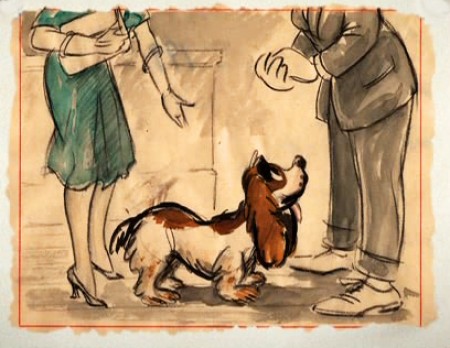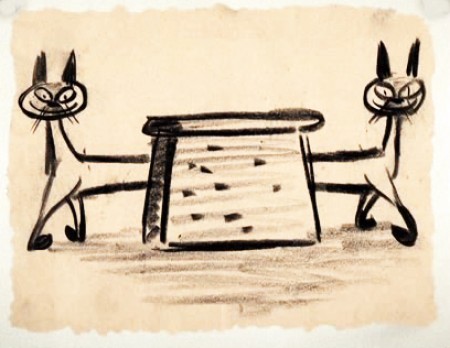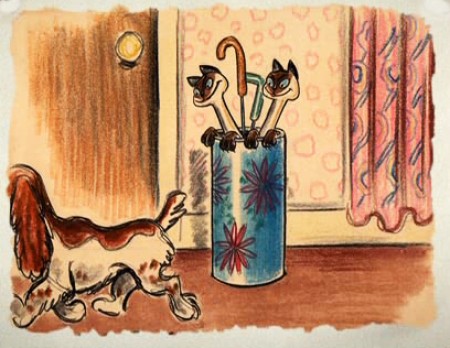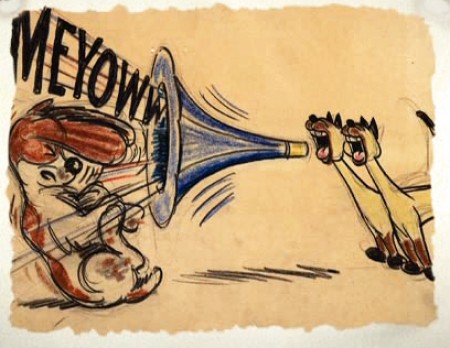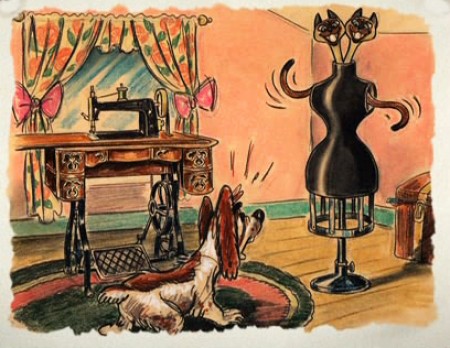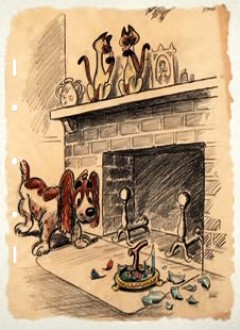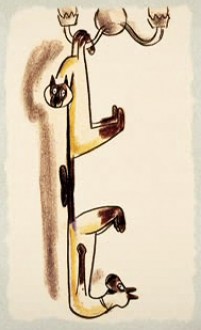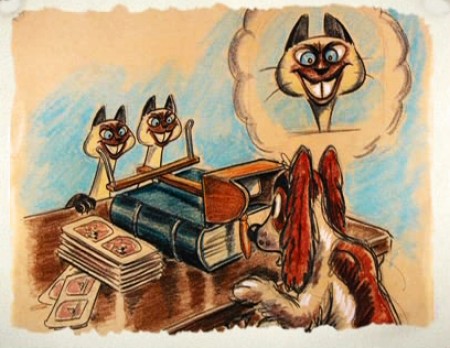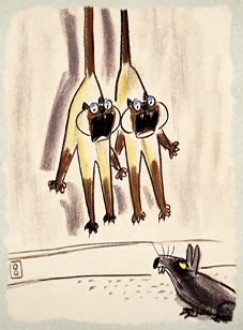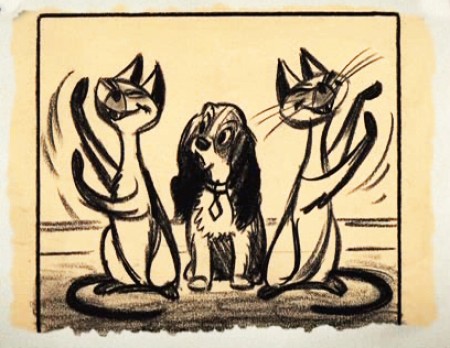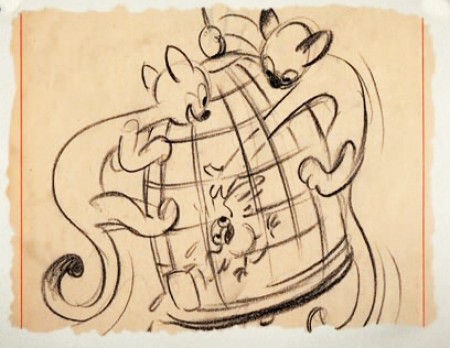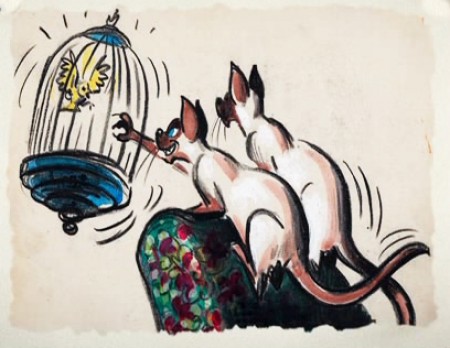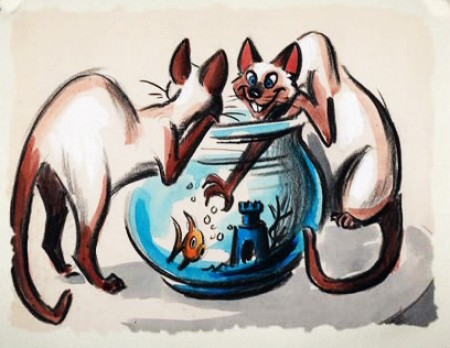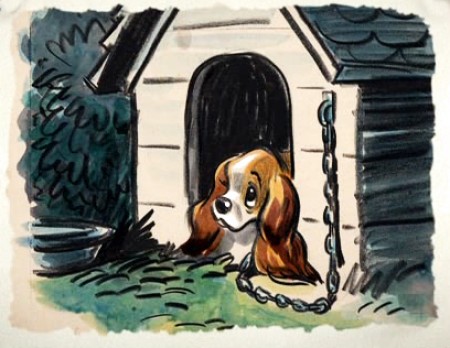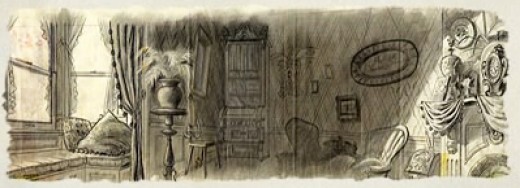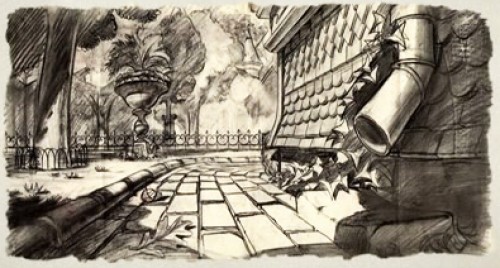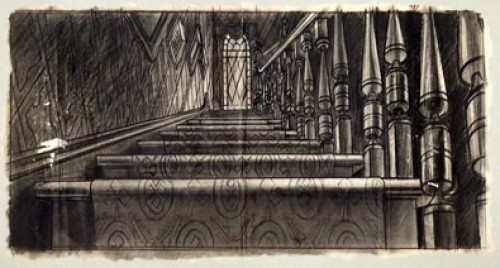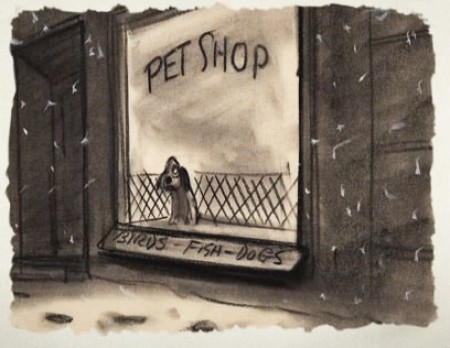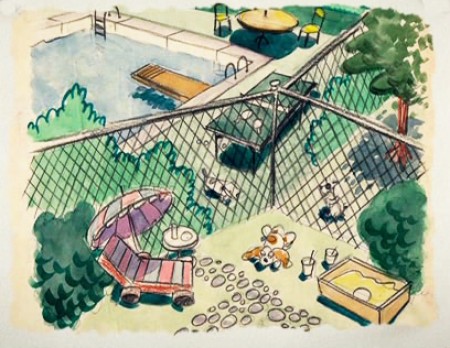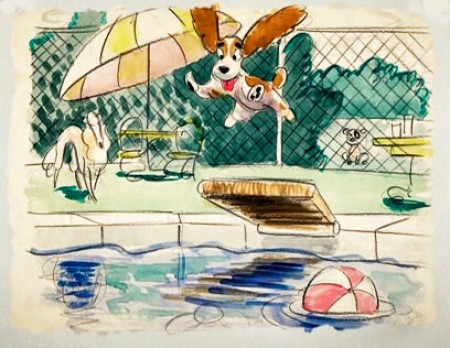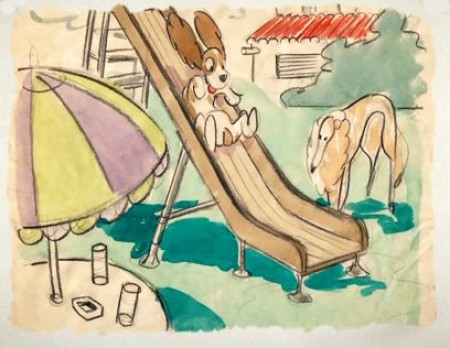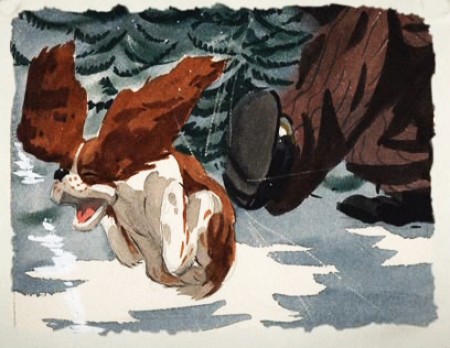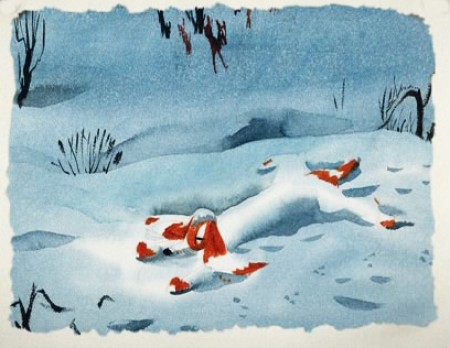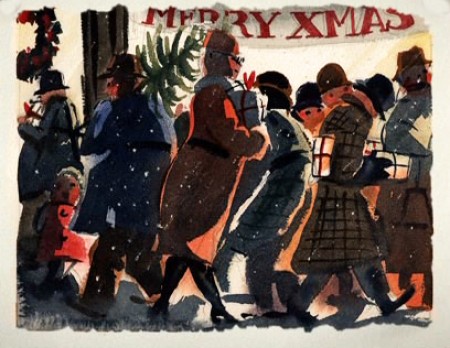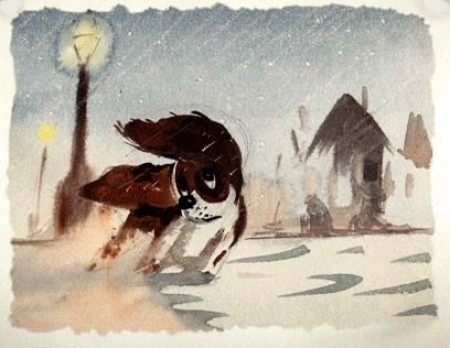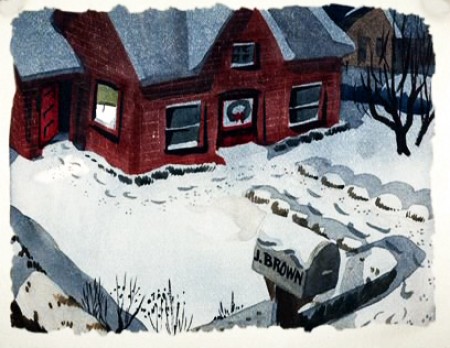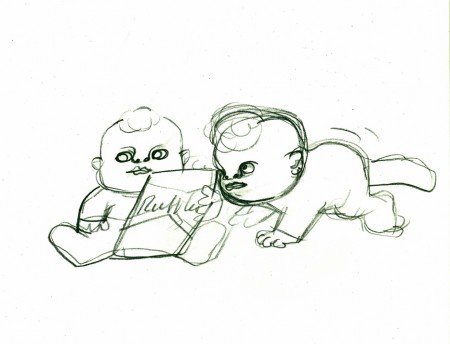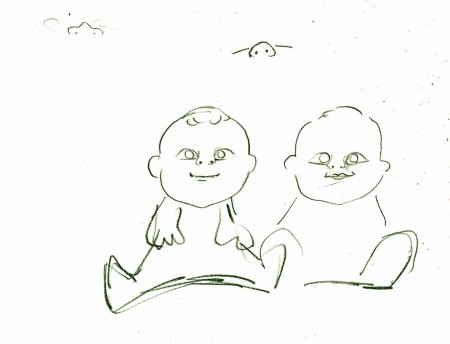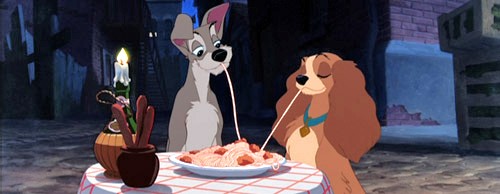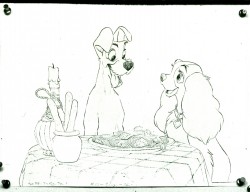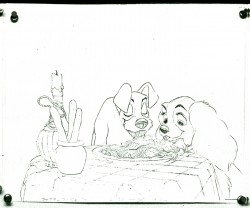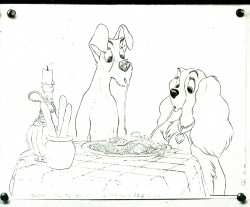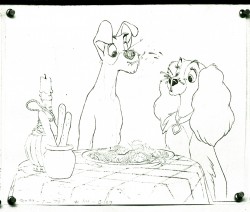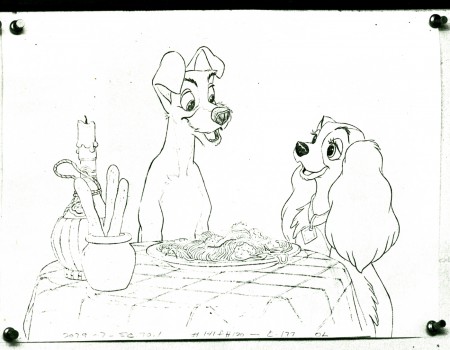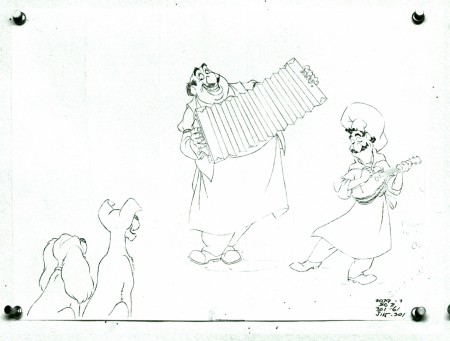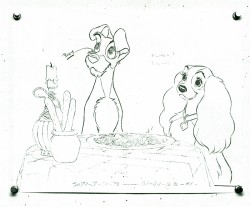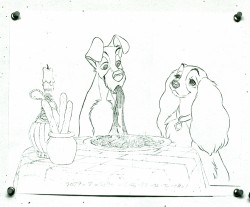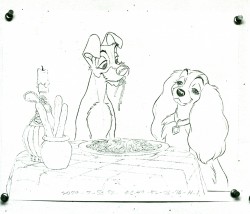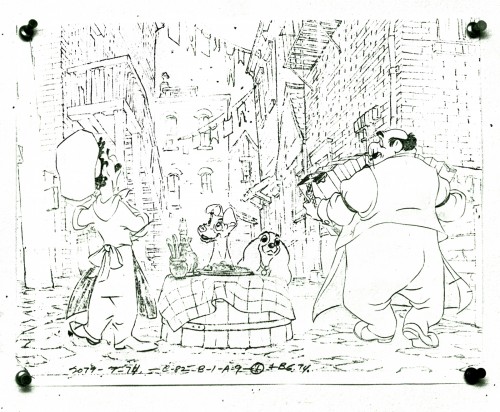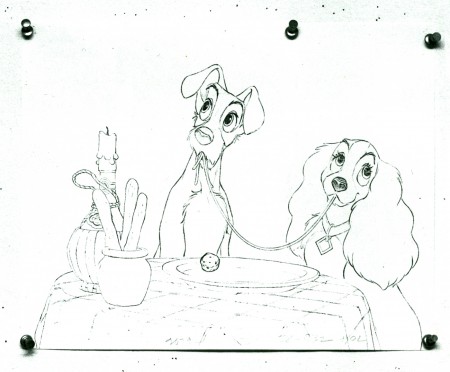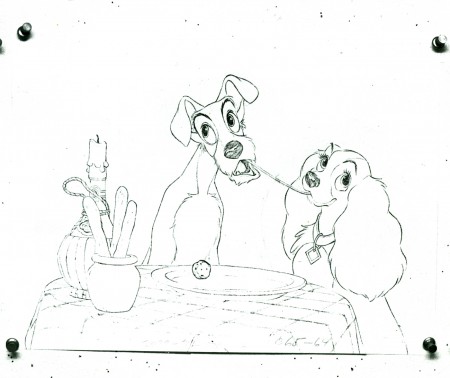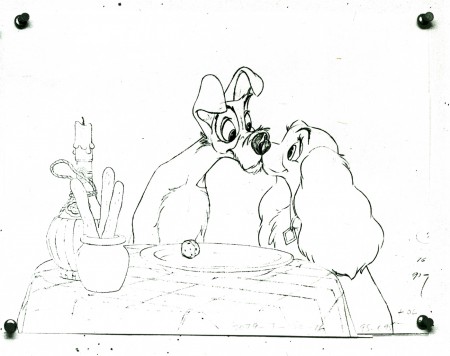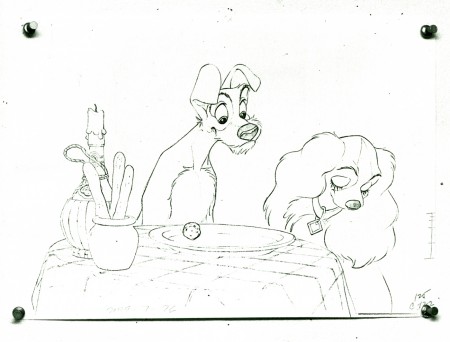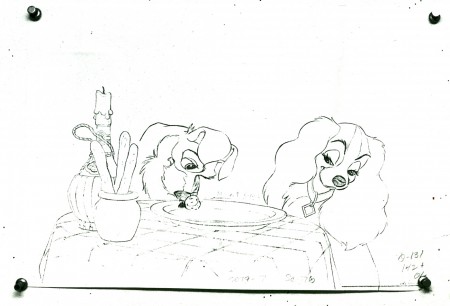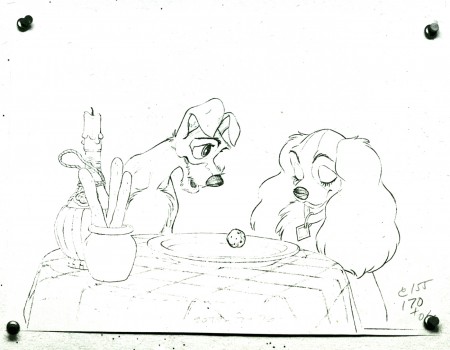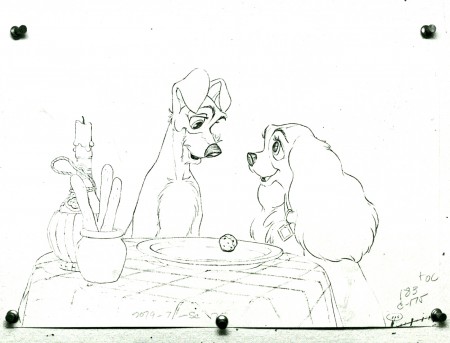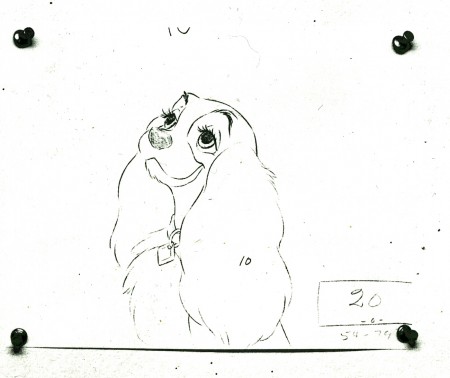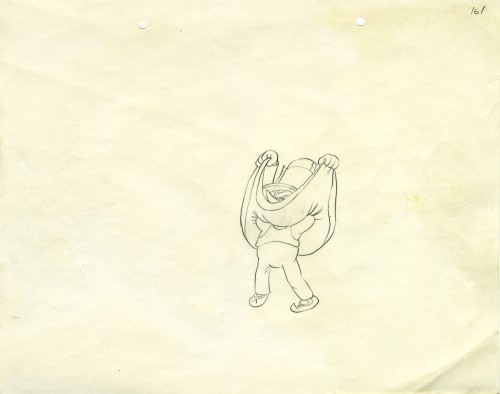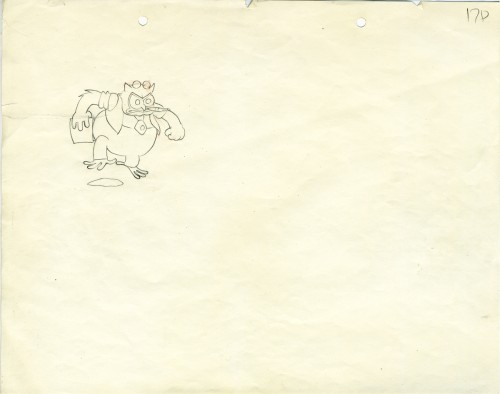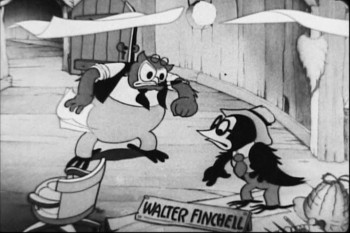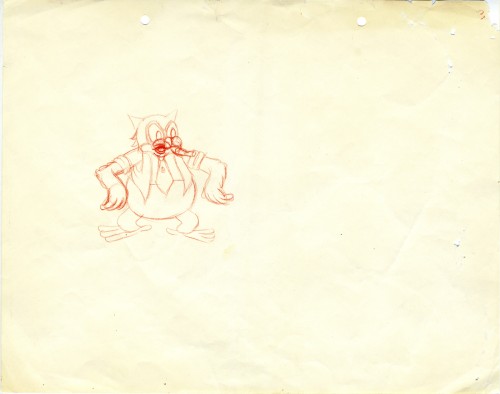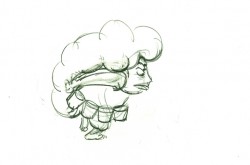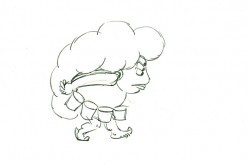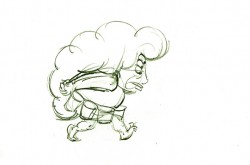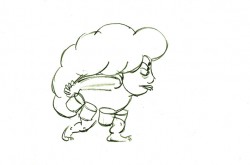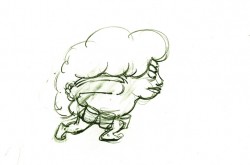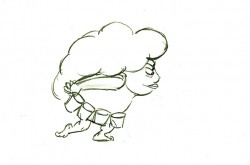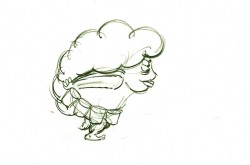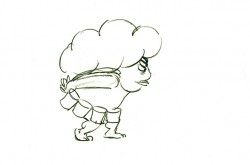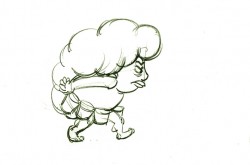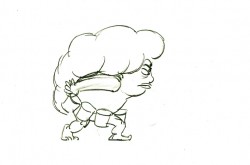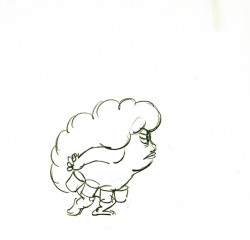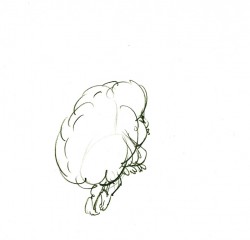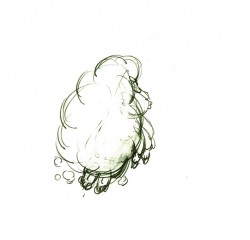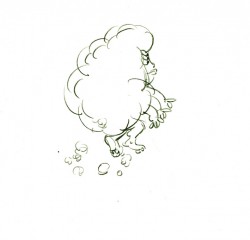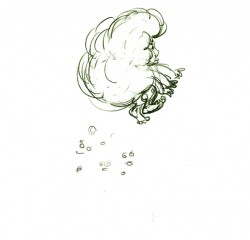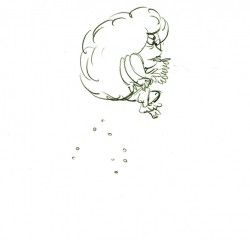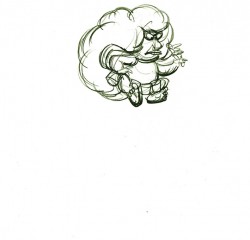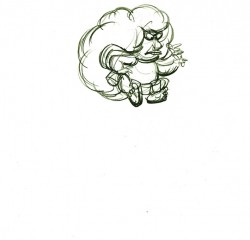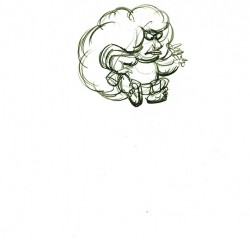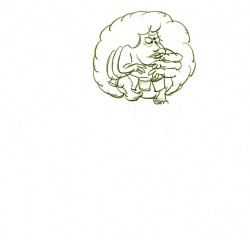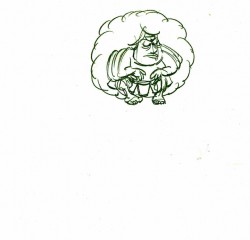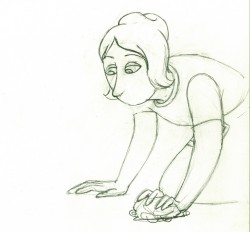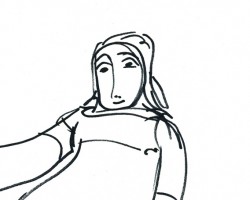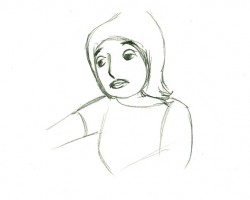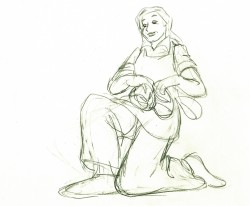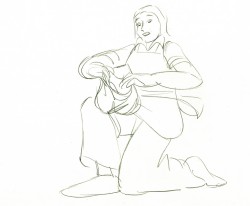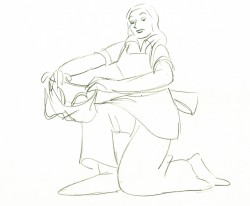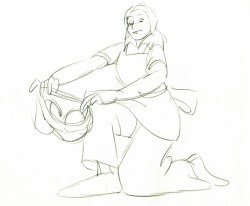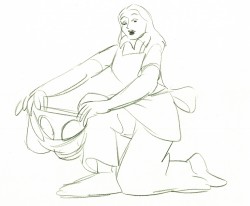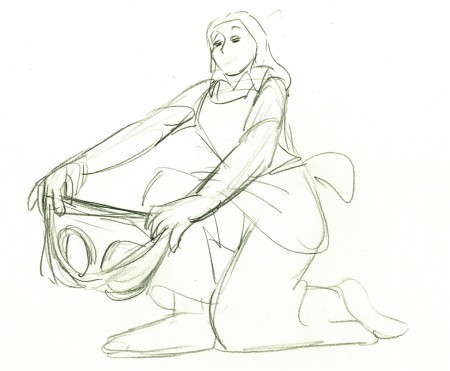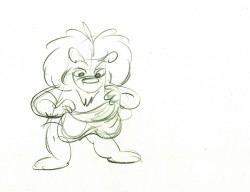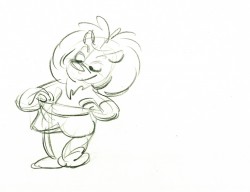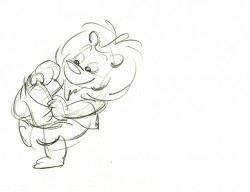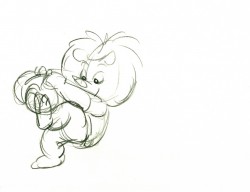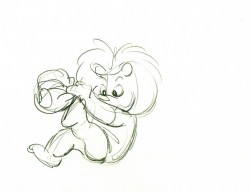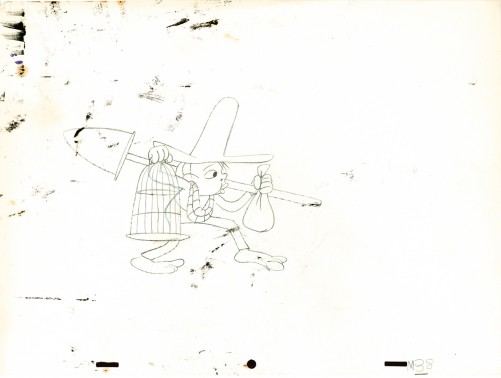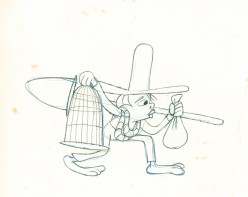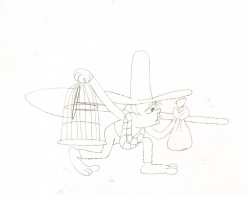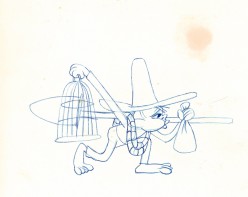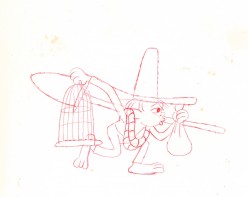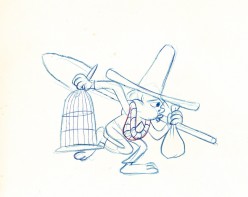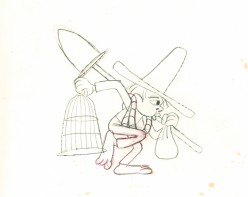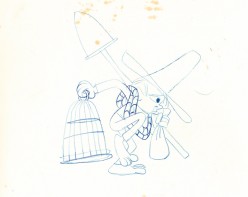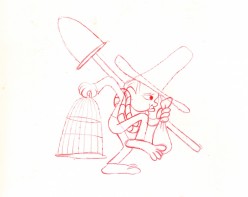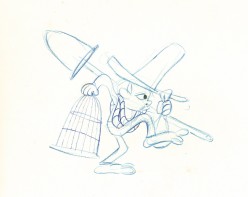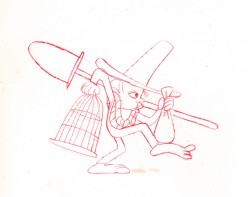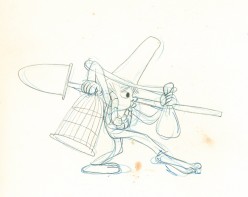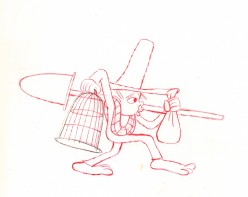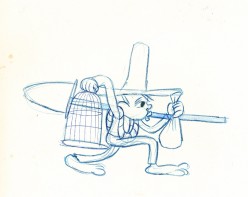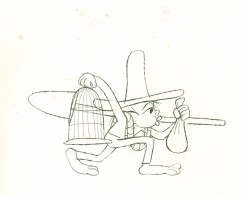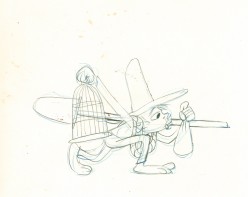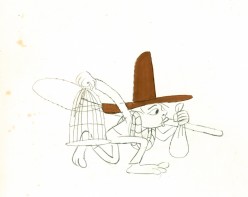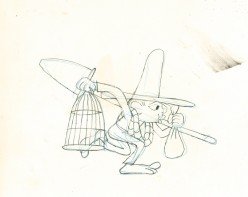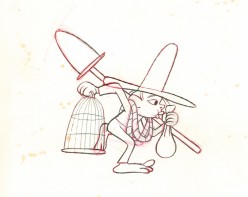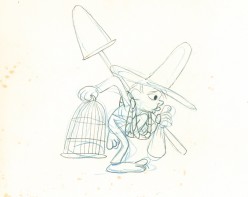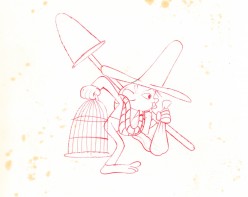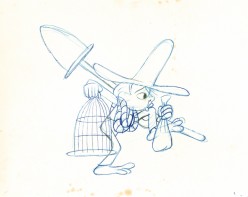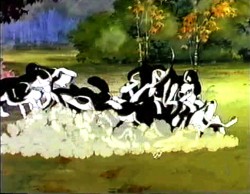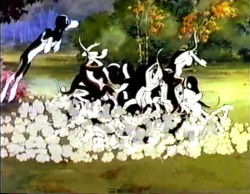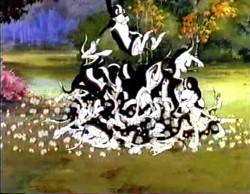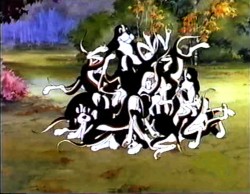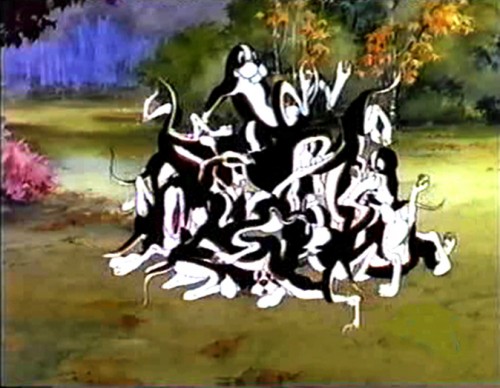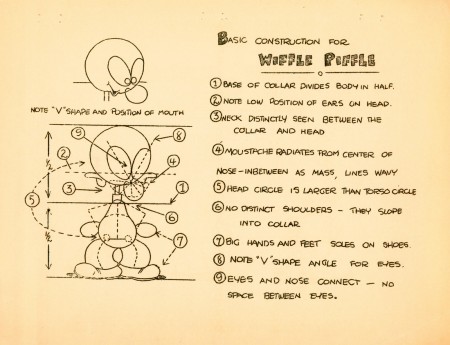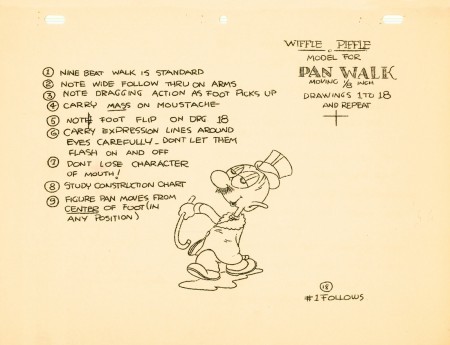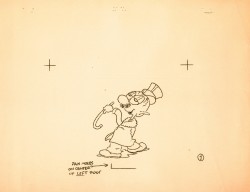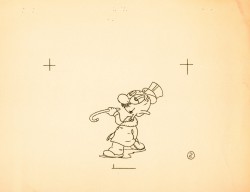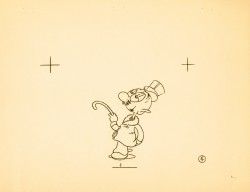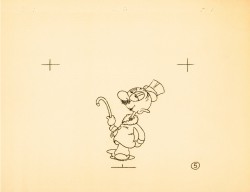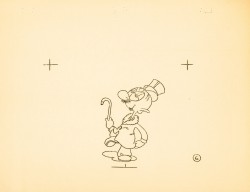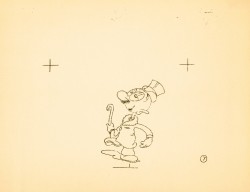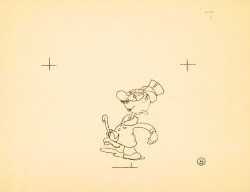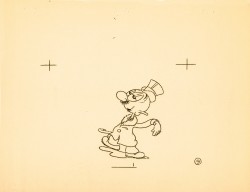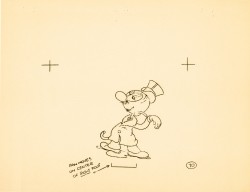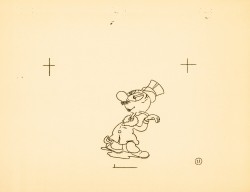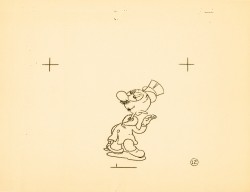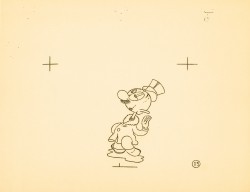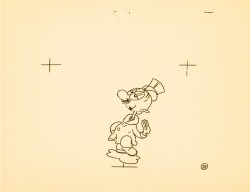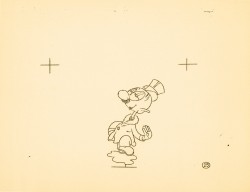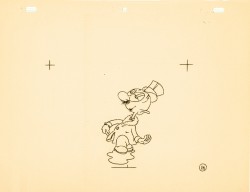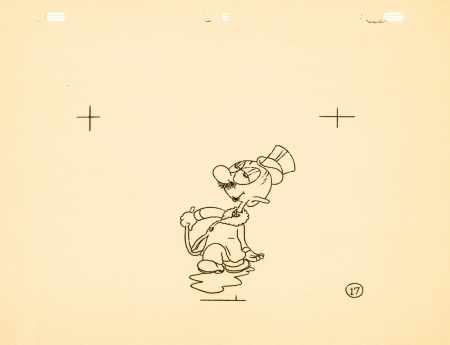Category ArchiveAnimation Artifacts
Animation Artifacts &Disney &Frame Grabs &Story & Storyboards 28 Apr 2009 07:33 am
Some More Lady drawings
-Continuing with some of the sketches done for Lady and the Tramp and found on the DVD extras gallery (in a somewhat tiny screen size), here are some more pieces by a number of different artists over a number of different years. They all exhibit a life of their own that’s pleasant to visit. Very cartoon compared to the film they made.
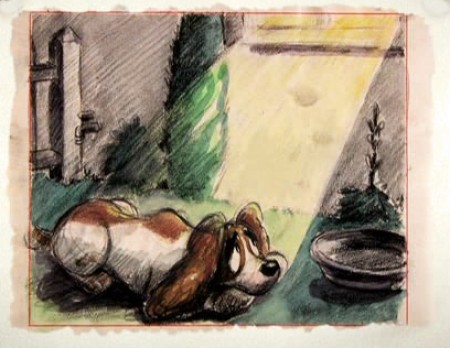
(Click any image to enlarge.)
One more post of these to go. On Friday.
.
Animation Artifacts &Disney &Illustration &Story & Storyboards 27 Apr 2009 07:46 am
Some Lady drawings
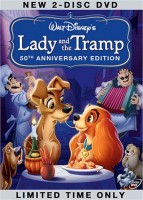 - The recent DVD of Lady and the Tramp includes some preliminary artwork for the film. I collected a bunch of it and am breaking it into a couple of posts. It’s easier to read off a blog than a tv screen, especially when the DVD tries hard to reduce them to the smallest size they can muster within an overworked border that is virtually pointless.
- The recent DVD of Lady and the Tramp includes some preliminary artwork for the film. I collected a bunch of it and am breaking it into a couple of posts. It’s easier to read off a blog than a tv screen, especially when the DVD tries hard to reduce them to the smallest size they can muster within an overworked border that is virtually pointless.
The illustrations – some are obviously BG layouts, others storyboard drawings – have a light and jaunty feel. They’re very cartoon in nature, and belie the actual feature they produced which, at times, is quite beautiful. Disney truly got the feel of “Main Street, USA” in this film.
I’m interested that most of the images don’t take in Cinemascope (since they were probably done before the decision to go Scope.) Most of them are also fast drawings that don’t feature the Tramp as we know him, and even Lady takes on a different form.
You get the feeling this film was pushed out relatively quickly. The results are excellent, regardless. Sonny Burke and Peggy Lee wrote an excellent pop-song score that doesn’t quite capture the turn-of-the-century, but it does capture the atmosphere of early 50s USA.
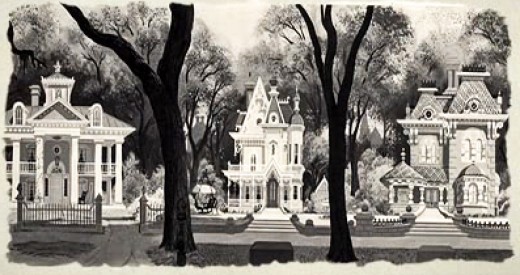
This drawing is in B&W on the DVD, but it appears in
Bob Thomas’ 1958 book, “The Art of Animation.”

Bg for The Princess and the Frog.
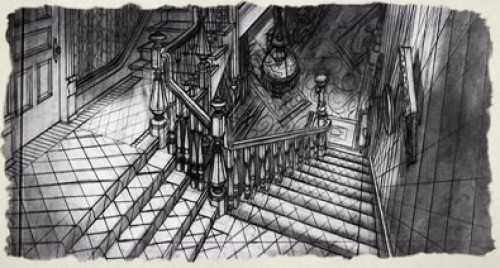
This looks not too different from a shot in Hitchcock’s Psycho.
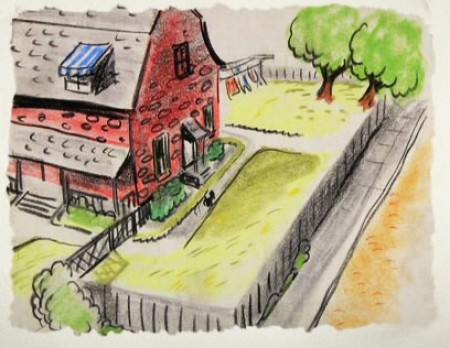
We seem to be in the Little Golden Book territory
with some of these images.
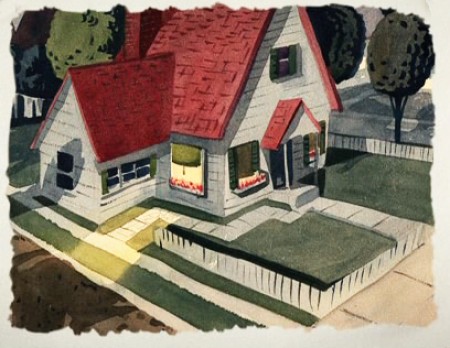
An earlier and different view.
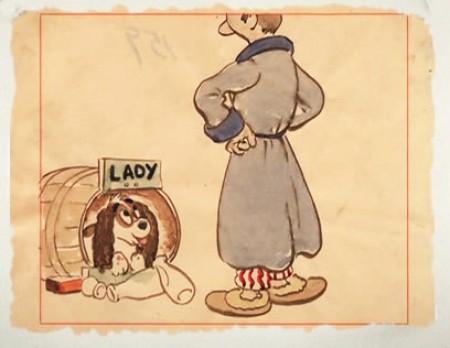
Or did I mean the New Yorker circa 1948?

I love weather and would have applauded more of it in the film.
To be continued tomorrow.
Animation Artifacts &Commentary &Hubley 24 Apr 2009 07:37 am
Up Up and Away
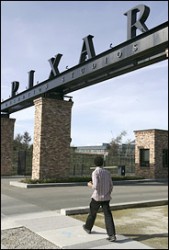 – Yesterday’s NYTimes blog, The Carpetbagger, featured a short piece on the expansion at Pixar. The source of the Times’ information was the Pixar Blog which admits to the construction. The cost of construction, “does not include labour and other associated costs, which will undoubtedly run into the millions of dollars also.”
– Yesterday’s NYTimes blog, The Carpetbagger, featured a short piece on the expansion at Pixar. The source of the Times’ information was the Pixar Blog which admits to the construction. The cost of construction, “does not include labour and other associated costs, which will undoubtedly run into the millions of dollars also.”
They then go on to add that the rest of the Disney studio is laying off workers, while they, Pixar, are expanding.
Très generous.
The Times comments: “But it’s hard to argue that Pixar is being in any way excessive with these plans. The studio, acquired by Disney in 2006 for $7.4 billion, has been planning the expansion for years, and desperately needs it: its current space, while opulent by some standards, is crammed far beyond its designed capacity.”
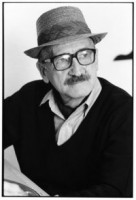 – Mark Osborne, one of the co-directors of Kung Fu Panda, reminisces on AWN about classes with Jules Engel at CalArts. This is a heartfelt piece that I enjoyed reading. If you haven’t found it yet, you might take a glance. The piece was written to coincide with the celebration of Jules’ work which was held last Sunday; fortunately the words live past that date.
– Mark Osborne, one of the co-directors of Kung Fu Panda, reminisces on AWN about classes with Jules Engel at CalArts. This is a heartfelt piece that I enjoyed reading. If you haven’t found it yet, you might take a glance. The piece was written to coincide with the celebration of Jules’ work which was held last Sunday; fortunately the words live past that date.
I like the fact that there are groups keeping Jules’ name alive. Aside from the positive comments from past students, there is also the Jules Engel Appreciation Group on Facebook. I wish some of the other important figures in animation’s history had equal attention. Maybe that’s part of my reason for writing on this blog.
- To that end, let me share these four drawings by John Hubley of a baby for a Ruffles commercial. I haven’t seen the spot, done in the late 60s, but I have seen lots of toddlers drawn by Hubley. It’s amazing how different all of them are. Each child has a real personality and charm that I find extraordinary. How many kids have we seen in the past twenty or so years in Disney/Dreamworks/Pixar/Bluth features that are all so identical. Their feature films like to post the names of all the production babies at the end of their films, but I’m not sure any of the animators actually see their babies, at least based on the characters we’ve seenanimated. (Think of that cloying cliché of a toddler in the otherwise excellent short, One Man Band.)
I haven’t found two such tykes from Hubley’s hand that resemble each other – or other cartoon children.
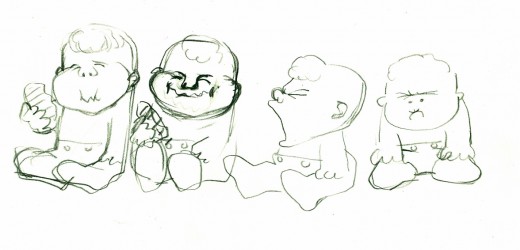
(Click any image to see the full animation drawing page.)
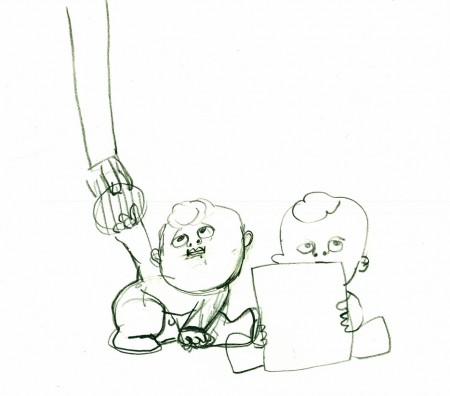
A decent animator can’t help but know what to do with such models.
Animation &Animation Artifacts 21 Apr 2009 06:35 am
L&T Meatballs
- Here’s some photographed drawings from The Lady & The Tramp meatball sequence.
These are taken from a photostat I have which was prepared for some book publication.
I don’t know if it ever made it to the book, but the drawings are too sterling to ignore.
I believe Frank Thomas animated the dogs and John Lounsbery the humans, and there are frame grabs of this sequence in John Canemaker‘s book, Disney’s Nine Old Men.
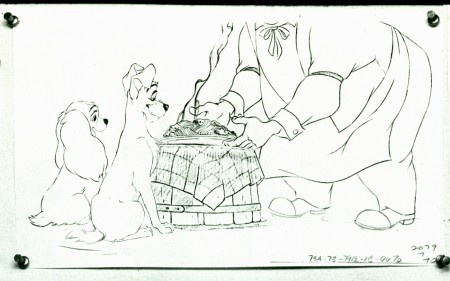
(Click on any image to enlarge.)

Here’s a beautiful cel set-up from Bob Cowan‘s collection.
Though it’s obvious the background is from another scene,
there’s an odd connection between the two that works for me.
Just another gem found on his great art blog.
Animation Artifacts &Models 20 Apr 2009 07:39 am
Van Buren stills
A short while back I found a couple of Van Buren animation drawings for sale on Ebay. I bought them and have been waiting for the new DVD from Steve Stanchfield and Thunderbean Animation. Toddle Tales is a gem of a dvd, and I was able to locate my drawings in the cartoons available.
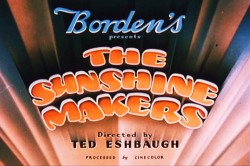 I already have several copies of The Sunshine Makers, which is probably the most famous of the Rainbow Parade cartoons. This was a film that was apparently done for Borden’s milk, and features one of the screwiest animation stories ever.
I already have several copies of The Sunshine Makers, which is probably the most famous of the Rainbow Parade cartoons. This was a film that was apparently done for Borden’s milk, and features one of the screwiest animation stories ever.
A bunch of little guys (named “Joy” on the model sheets) deliver bottled sunshine (which looks a lot like milk) somewhere. We never see who’s receiving the sunshine, but carts of these elves are delivering it.
Other little guys (named “Gloom”) don’t want the sunshine delivered. We see one of these top-hatted characters shoot an arrow at a Joy guy, and gloomy gus ends up getting bathed in sunshine.
My drawing reveals him taking off his outer clothes to bury them.
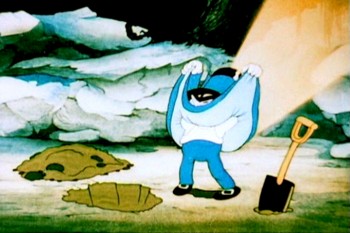
(Click any image to enlarge.)
The other two drawings I bought were a mystery to me. However, I was easily able to find them in the cartoon A Little Bird Told Me.
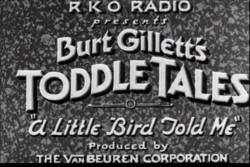
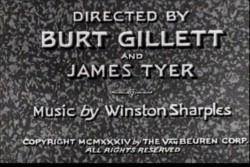
Burt Gilette & JIM TYER directed the film, and the music is by Winston Sharples,
who scored most of the Paramount cartoons later in life.
This is an equally odd short. A live action (it looks like second-rate Our Gang of the early 30s) child gets caught eating jam. His sister wipes him clean. However the bird in the tree tells all about it.
Apparently, there’s a bird newspaper just out the kitchen window. Walter Finchell is assigned the story by his owl editor. Here’s where my drawings come in. The owl editor comes out to hand over the story.
One of the drawings is an exact match. The other is close.
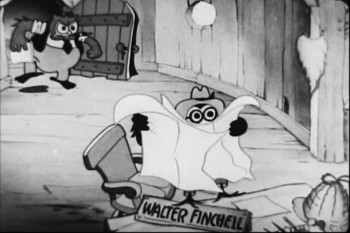
Thunderbean also includes a few model sheets on the dvd. Here’s one of my editor owl.
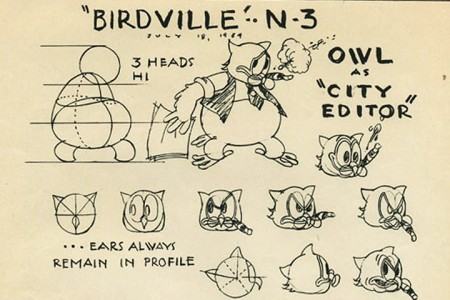
Animation &Animation Artifacts &Hubley &walk cycle 07 Apr 2009 07:50 am
Phil Duncan’s walk cycle
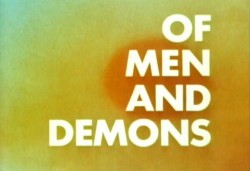 - Phil Duncan was a mainstay of the Hubley animators in all the time I was there.
- Phil Duncan was a mainstay of the Hubley animators in all the time I was there.
You could tell who Hubley’s favorite animators by the frequency in which he doled out sequences to them. Whereas Tissa David or Bill Littlejohn or Barrie Nelson would have been asked to animate entire shorts by themselves, someone like Phil Duncan would get whole sequences to animate. At the same time, John so depended on Phil and trusted what he did.
There were never pencil tests at the Hubley studio. Only one instance of it do I remember, and that was on the Art Babbitt mime scenes from Carousel. As I said once before, I remember John running out to get me asking if I’d like to see animation as good as I’d ever see. We then watched the PT over and over together. Ultimately John took Art’s animation on twos and had me put it on four frame dissolves to get more screen time out of it. A budget was a budget and you had to make the most out of the excellence you had in your hand.
But as I mentioned yesterday, Phil would animate on odd numbers expecting the even numbers to be inbetweened. Most times, John asked me to reexpose the scene on fours and not do the inbetweens. Of course, Phil was aware this would happen and had planned on it.
.
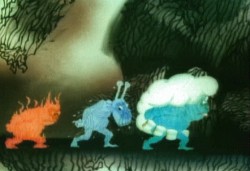
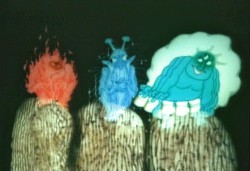
Here is a walk cycle (and more) by Phil Duncan from Of Men and Demons, which was nominated for the Oscar in 1969. The full scene includes the three demons walking and then flying up to their cave.
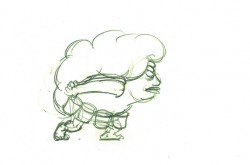 1
1 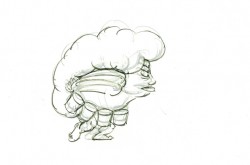 2
2
(Click any image to enlarge to full animation paper view.)
The rest of the scene breaks out of the walk cycle. I
enlarged the frames to accomodate the remainder of the action.
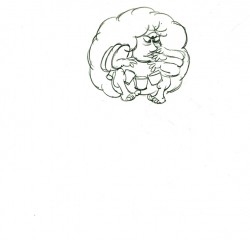 23
23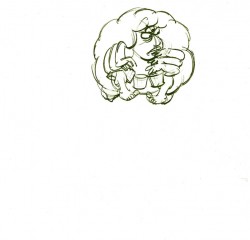 24
24
On threes at 24FPS
Click left side of the black bar to play.
Right side to watch single frame.
Animation &Animation Artifacts &Hubley 06 Apr 2009 07:31 am
Phil Duncan’s Carousel
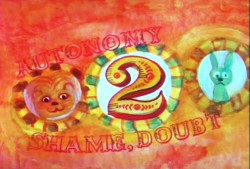 - There’s an odd conversation going on at the Animation Guild Blog. It started out with the traditional CG vs hand drawn argument, then it morphed into who get the better salaries and the greater recognition.
- There’s an odd conversation going on at the Animation Guild Blog. It started out with the traditional CG vs hand drawn argument, then it morphed into who get the better salaries and the greater recognition.
Quite a few brilliant animators passed under the limelight and never got quite the credit they deserved for their long and dedicated work in the medium.
Phil Duncan certainly belongs in this
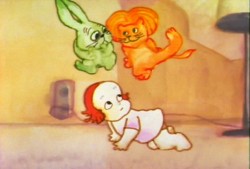 category. I never got to meet him while working at the Hubley studio, but I assisted many of his scenes, spoke with him and came to know his style well.
category. I never got to meet him while working at the Hubley studio, but I assisted many of his scenes, spoke with him and came to know his style well.
He worked for many years animating at the Disney studio, starting on Pinocchio and working his way up into the early 60s. He animated on Magoo’s 1001 Arabian Nights and Gay Purr-ee for UPA.
His work for Hubley began with The Cruise in
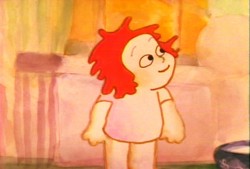 1966 and continued through many of the important films right up to John’s death in 1977. Phil’s work on Watership Down began with John Hubley and continued with Martin Rosen.
1966 and continued through many of the important films right up to John’s death in 1977. Phil’s work on Watership Down began with John Hubley and continued with Martin Rosen.
I got to assist many a scene Phil animated for shorts, commercials, Electric Company spots etc. I also followed him through many scenes on the feature, Everybody Rides The Carousel.
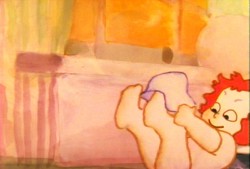
His style was so different from all the other animators I mentioned that it was a delight for me to work behind him. His line was always this great feminine stroke that featured plenty of arcs and curves. He usually left only one inbetween between drawings, and he knew that often enough John Hubley would say to put the scene on fours and not inbetween it. I remember breaking the news to Phil the first time I saw this happen. There was an ever-so-slight downturn in his voice, but it was obvious that he expected this to happen.
Believe me, he wasn’t the only animator who heard me break this news. The films were done on such a tight budget that every penny counted. It did give me some power, because I would judge the scenes to see if I felt there was any point that we couldn’t get away with it, and if that were the case I would inbetween it while inking the drawings. John didn’t need to know, and I worked quickly enough so that it didn’t cost him much more of my salary.
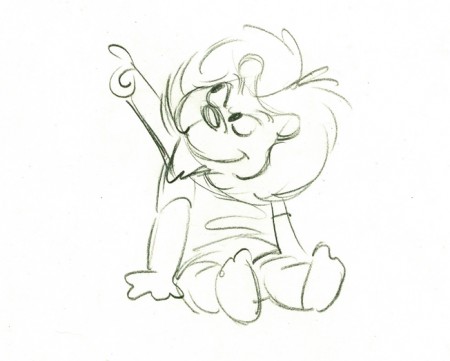 57A
57A(Click any image to enlarge.)
Here are some drawings Phil did for the Toddler sequence from Everybody Rides the Carousel. Horse #2. The toddler can turn into a rabbit (meek) or a lion (daring.) Here she turns into a lion as she tries to dress herself with some help from her mother.
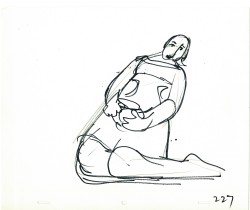
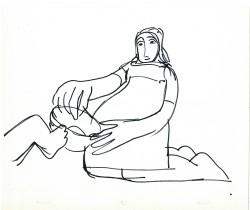
These are a couple of layouts by John Hubley.
Below, is a clean up that he sent to Phil Duncan of the mother’s head.
Here’s the next scene’s animation before it underwent some changes.
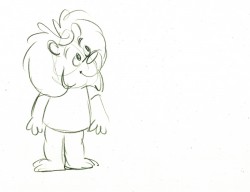 13
13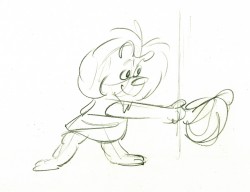 17
17
As you’ll notice from the frame grabs above, this sequence changed.
John wanted to go with the girl whose head, for a brief moment,
turns into the lion’s head. (Doubt) I did the change using most of
what Phil had on his original drawings.
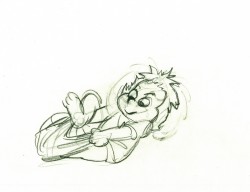 35
35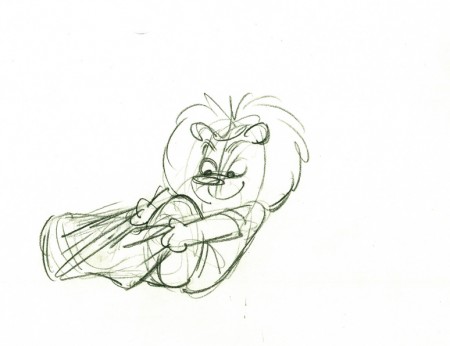 37
37
Note that on her hit down onto the floor #35, she turns back
into the toddler child before going back to the aggressive lion.
Animation &Animation Artifacts &Hubley &walk cycle 30 Mar 2009 07:56 am
Marky’s Walk
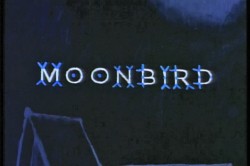 - If I had to choose who was my favorite animator, I’d have a tough time. Equal credit would probably have to go to three different people: Bobe Cannon, Tissa David and Bill Tytla. Jim Tyer and Ed Smith would fall just a smidgen below these three, for me. But there are none like them all, as far as I’m concerned.
- If I had to choose who was my favorite animator, I’d have a tough time. Equal credit would probably have to go to three different people: Bobe Cannon, Tissa David and Bill Tytla. Jim Tyer and Ed Smith would fall just a smidgen below these three, for me. But there are none like them all, as far as I’m concerned.
I’ve posted a lot of drawings from Tissa and Bill Tytla, but have very few drawings by Bobe Cannon (nor have I seen many published anywhere.)
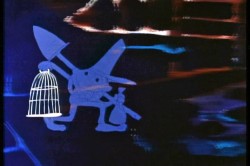 Here is a walk cycle from the beginning of Hubley’s monumental short, Moonbird. The odd numbers are extremes by Cannon, and the inbetweens (even numbers) were done by Ed Smith. Three different sized papers were used for this, and you can view them full sized if you click the thumbnails.
Here is a walk cycle from the beginning of Hubley’s monumental short, Moonbird. The odd numbers are extremes by Cannon, and the inbetweens (even numbers) were done by Ed Smith. Three different sized papers were used for this, and you can view them full sized if you click the thumbnails.
You’ll notice there’s paint all over the drawings. The ink & paint involved tracing the drawing, then using oil paints to cover all of the clear area in black. Some of that paint seeped onto the originals. In one drawing even to coloring the hat accidentally.
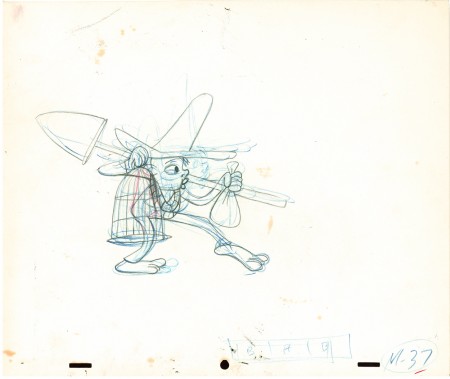 37
37(Click any image to enlarge.) “Marky” walk cycle from Moonbird
On twos at 24FPS
Click left side of the black bar to play.
Right side to watch single frame.
There’s a lot more to this scene including several variants on the walk.
At some future time, I’ll add the other drawings to show off the entire scene.
Animation Artifacts &Frame Grabs 27 Mar 2009 08:05 am
MGM Hounds
- Cable TV has changed and not for the better, just toward the more corporate. In the old days you could turn on the Disney channel and catch some Disney animated shorts – the classic kind, not the Flash kind. You could see some of the 60s Paramount cartoons on Nickelodeon. You could tune into TNT and see early MGM cartoons. Today, if you’re lucky, you might see one of the more popular Harman-Ising shorts sandwiched in between two late-Droopy cartoons on Boomerang’s MGM show.
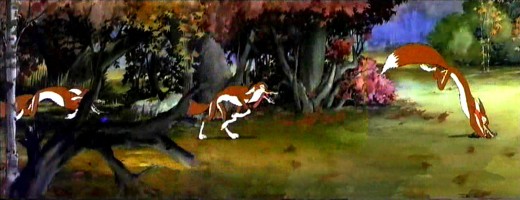
(Click any image to enlarge.)
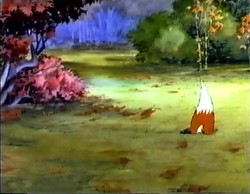 I was a big fan of those Harman-Ising MGM cartoons. The sheer opulence of the productions was staggering to watch. For over a year, I taped an early morning program on TNT trying to grab all of the Harman-Ising shorts they aired. I was able to capture about 90% of them. It’s unfortunate that no DVD has been released of these gems so that collectors like me can feel satisfied. The Turner transfers were pretty good, and a simple DVD release of these would be worth a lot to me.
I was a big fan of those Harman-Ising MGM cartoons. The sheer opulence of the productions was staggering to watch. For over a year, I taped an early morning program on TNT trying to grab all of the Harman-Ising shorts they aired. I was able to capture about 90% of them. It’s unfortunate that no DVD has been released of these gems so that collectors like me can feel satisfied. The Turner transfers were pretty good, and a simple DVD release of these would be worth a lot to me.
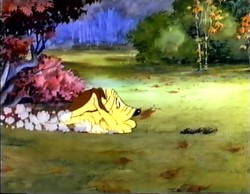 Not too long ago, I was able to buy a couple of drawings on ebay from the Harman-Ising shorts. There wasn’t much competition for them, and I was able to afford them.
Not too long ago, I was able to buy a couple of drawings on ebay from the Harman-Ising shorts. There wasn’t much competition for them, and I was able to afford them.
One drawing is from the odd series featuring the “two curious pups.” I had an old Blackhawk 8mm copy of this short (in an edited version) and would run it back and forth still frame. I’ve captured some stills of this very scene to give you an idea of what’s happening.
The Pups’ Picnic (1936)
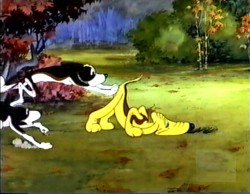
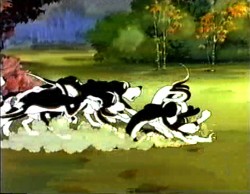
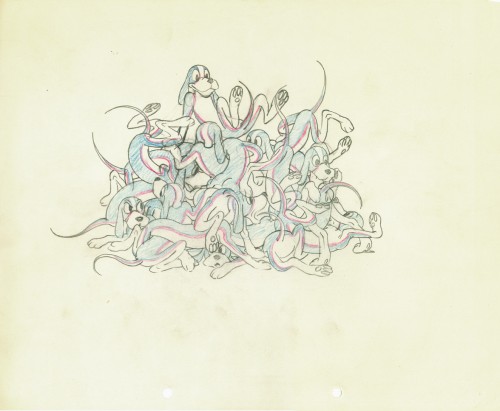
I don’t know who animated this scene,
but the drawing is a beauty, as far as I’m concerned.
The paper siize is 9¾ x 12 w/two round holes.
Animation &Animation Artifacts &Fleischer &Models &walk cycle 23 Mar 2009 07:59 am
Wiffle Piffle
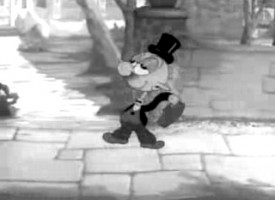 - Wifle Piffle was a character that the Fleischer studio tried to develop out of the Betty Boop series. The first appearance was in a Screen Song: I Feel Like A Feather In The Breeze released in 1936. He appears as a waiter in the opening. The animation of the character was by Tom Johnson (as was this model sheet.)
- Wifle Piffle was a character that the Fleischer studio tried to develop out of the Betty Boop series. The first appearance was in a Screen Song: I Feel Like A Feather In The Breeze released in 1936. He appears as a waiter in the opening. The animation of the character was by Tom Johnson (as was this model sheet.)
Two follow-up films were made with this side character in Betty Boop shorts.
The first, released in February 1937, was Whoops! I’m A Cowboy, and the second, in March 1937, The Hot Air Salesman. The opening scene features an expensive multiplane shot behind him.
He seems to have been an Egghead type character whose sole character trait was a silly walk. Needless to say, they couldn’t find a joh for him.
The model sheet for the character was an 18 drawing walk cycle with a bit of a turnaround. Crosshairs keep the character in registration; only a couple of the pages were punched.
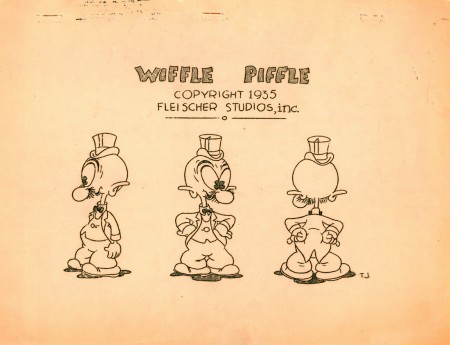 Wiffle Piffle walk cycle
Wiffle Piffle walk cycleOn ones at 24FPS
Click left side of black bar to play.
Right side to watch single frame.

